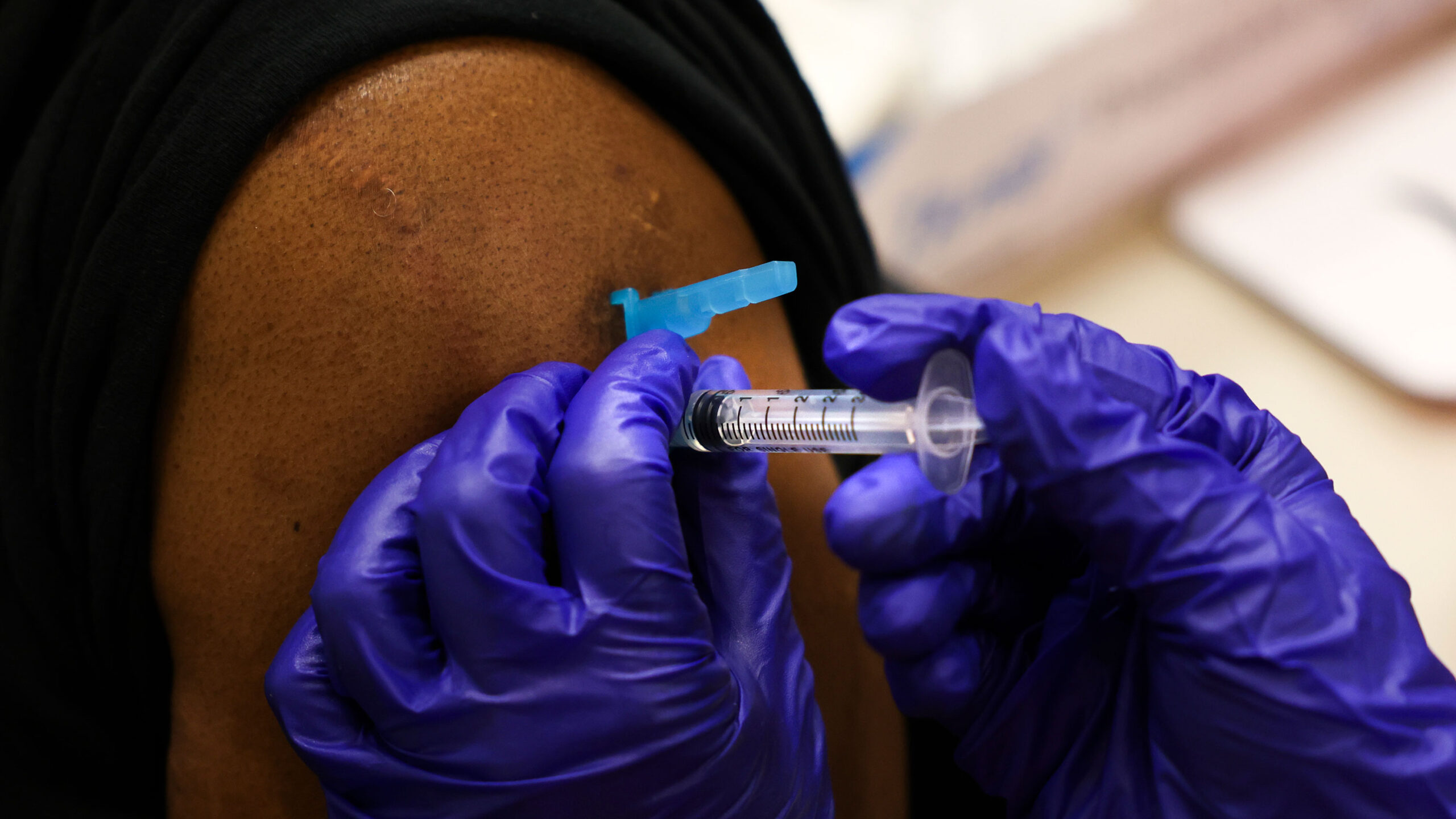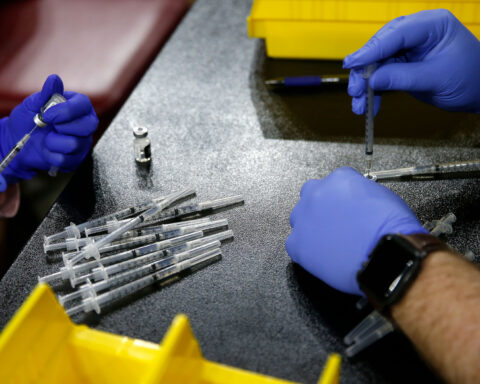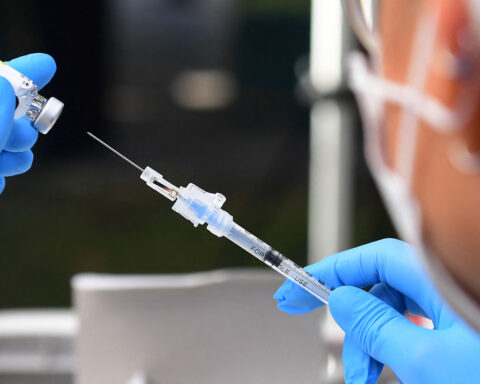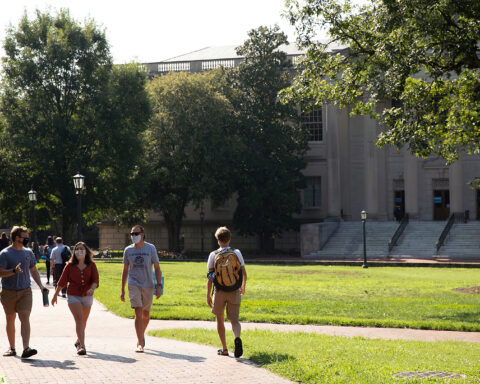At last, there’s some good news.
Exactly one horrific, demoralizing and family-splitting year since darkness descended on America, top public health officials arrived at a (virtual) White House coronavirus strategy briefing on Monday armed with tangible hope.
In announcing new US Centers for Disease Control and Prevention guidelines on how fully vaccinated citizens can begin to pick up their lives, they struck a momentous turning point in a pandemic that has killed more than 525,000 Americans.
“It’s science based. It’s sensible. You can hug your grandkids again. If you’ve been waiting to get a haircut, see the dentist, you can do that,” former CDC Director Tom Frieden said on CNN’s “The Situation Room.”
As is the way in the worst public health disaster in 100 years, good news is heavily caveated. Those in the long lines for the vaccine must not let up. Travel, even for those who’ve been vaccinated, is advised against — though some prominent medical experts said the CDC is being overly cautious. And the threat of pernicious Covid-19 variants may be about to inflict another surge of death and sickness, again testing the patience of a weary nation.
While new Covid cases have come down sharply — they are hovering at around 60,000 a day — the elevated plateau guarantees many thousands more deaths, especially as more states defy science and risk the return of normality by lifting mask mandates and restrictions before the virus is properly suppressed.
But the announcement of the guidelines on Monday was a striking moment because White House Covid-19 briefings have generally been depressing affairs — unless you count ex-President Donald Trump’s politically self-serving and delusional optimism before he stopped showing up.
The new President, Joe Biden, will deliver his first prime-time address on Thursday to mark the yearlong mark in the country’s struggle with the coronavirus. In addition to giving the country a morale boost and highlighting the light on the horizon, he will hope to showcase his $1.9 trillion Covid-19 relief package, expected to finally pass Congress the day before.
What can vaccinated people do?
Under the new protocols, vaccinated people can visit other vaccinated people indoors without masks or physical distancing. They can also see unvaccinated people from a single household without either precaution if those yet to get the injection are at low risk for severe disease. And if they are exposed to someone with Covid-19 but are symptom free, they can skip testing and quarantining.
These guidelines will allow a real — if qualified — return of freedoms once taken for granted for millions of people. They apply two weeks after a second dose of the Pfizer and Moderna vaccines and 14 days after the single-dose Johnson & Johnson injection.
Already, 60 million Americans know that moment of euphoria that comes with getting a first dose. And more than 30 million are fully protected — a figure that has just overtaken the total number of US Covid-19 cases.
The White House had been under growing pressure to offer some guidance to Americans about how their lives can change when they are vaccinated.
The announcement on Monday could have an important public health impact in itself. To the majority of Americans who are still waiting, the glimpse of post-vaccination liberation could offer a new incentive to buckle down with social distancing and masking for just a few months longer.
Talk of returning freedoms could also encourage vaccine skeptics to step forward to help create the herd immunity in the population needed to stop Covid-19 spreading.
A tragic fact
The proven promise of vaccines and the accelerating pace that they are going into American arms — at a rate of about 2 million or more a day — offers something like the prospect of a normal summer.
But it also brings a more poignant realization.
People who get sick and die in the coming weeks will have been within touching distance of a vaccine that could have saved their lives.
“There is so much that’s critical riding on the next two months,” CDC director Dr. Rochelle Walensky said Monday. “How quickly we will vaccinate versus whether we will have another surge really relies on what happens in March and April.”
That equation between vaccination and a viral surge is what makes public health experts so horrified that more and more states are moving to lift masking mandates and are throwing businesses open. After Texas and Mississippi announced that step last week, another Republican bastion, Wyoming, announced it would lift its mask mandate and open bars, gyms and restaurants.
There are also growing concerns about the impact of spring break in Florida, where the more contagious variant of Covid-19 first found in the UK is multiplying at a rapid rate and could seed new outbreaks countrywide when partying youngsters return home.
America’s top infectious disease expert, Dr. Anthony Fauci, said Monday that the current rates of infection were far higher than levels at which it was wise to start lifting restrictions.
“The good news is that it was coming down. The sobering news is that it’s starting to plateau a bit,” Fauci told a National League of Cities Conference. “The history with this virus has told us when you start to plateau at a level as high as this, which is about 60 to 70,000 cases a day, that you are by no means out of the woods.”
Not free to move about the country
Despite the continued danger of a new pandemic surge, the travel guidance offered by the CDC puzzled some experienced medical experts.
Dr. Leana Wen, a former Baltimore health commissioner, told CNN’s Brooke Baldwin that the advice defied common sense, since it was inconsistent with other recommendations on who vaccinated Americans could see.
“I actually would go further and say that people who are fully vaccinated should be able to travel — should be encouraged to travel, and that’s one of those incentives that we can give as a way for restoring freedoms, that you now are able to travel and go visit your loved ones and go to museums and cultural institutions once you’re fully vaccinated,” Wen said.
Dr. Jonathan Reiner, a renowned heart surgeon and professor at George Washington University, agreed that the guidance on travel was too restrictive.
“I think they really haven’t gone far enough,” Reiner told CNN’s Erin Burnett, while suggesting that the CDC was worried about sending a message that might convince non-vaccinated Americans to start taking to the skies.
But earlier, Walensky had explained the rationale behind the CDC’s caution.
“Every time there’s a surge in travel, we have a surge in cases in this country,” she said.





